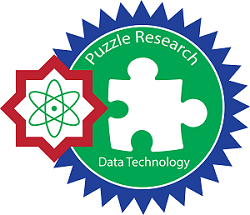From Comments to Insight: Predictive Classification of Organizational Cultural Entropy Using SBERT, K-Means, and Logistic Regression
DOI:
https://doi.org/10.57152/malcom.v5i4.2157Keywords:
Cultural Entropy, Linear Regression, Machine Learning, SBERT, Text MiningAbstract
This study aims to develop a machine learning-based predictive model based on clustered data to identify cultural entropy in organizations through the analysis of open-ended comments on employee perception surveys of superiors. energy used for unproductive activities in a work environment. Entropy shows the level of conflict, friction and frustration in the environment. With a text mining approach, answers to open-ended questions in the cultural entropy survey were processed with Sentence-BERT and clustered using the K-Means algorithm into two categories, namely cultural entropy and non-cultural entropy. The dataset that already has labels from the clustering results is used to develop a classification model. The algorithms used are Random Forest, Logistic Regression, and Support Vector Machine (SVM), which are evaluated through accuracy, precision, recall, and F1-score metrics and a confusion matrix. The results show that Logistic Regression provides the best performance with an accuracy of 0.985, a precision of 1.00, and an F1-score of 0.978 without any classification errors. These findings indicate that the clustering approach followed by machine learning-based predictive is effective in identifying organizational cultural entropy. This can be used to design appropriate interventions and as an early detection system for cultural entropy in human resource management
Downloads
References
I. Gorze?-Mitka, “A Green Approach On Risk Management: Exploring Constructs In A Concept Mapping Framework,” Scientific Papers of Silesian University of Technology. Organization and Management Series, vol. 2024, no. 213, pp. 101–123, 2024, doi: 10.29119/1641-3466.2024.213.8.
R. Barrett, “The Second Edition.”
A. Rahman, F. Naufal, and S. G. Partiwi, “Measuring the entropy of organizational culture using agent-based simulation,” in Managing Learning Organization in Industry 4.0, Routledge, 2020, pp. 109–115. doi: 10.1201/9781003010814-19.
A. Mustika Rani and S. Hadi Senen, “Navigating Cultural Entropy: Leadership Strategies and Organizational Dynamics in Higher Education Institutions,” 2023.
U. Udin, R. D. Dharma, R. Dananjoyo, and M. Shaikh, “The Role of Transformational Leadership on Employee Performance Through Organizational Learning Culture and Intrinsic Work Motivation,” International Journal of Sustainable Development and Planning, vol. 18, no. 1, pp. 237–246, Jan. 2023, doi: 10.18280/ijsdp.180125.
A. Rahman, F. Naufal, and S. G. Partiwi, “Measuring the entropy of organizational culture using agent-based simulation,” in Managing Learning Organization in Industry 4.0, Routledge, 2020, pp. 109–115. doi: 10.1201/9781003010814-19.
L. Breiman, “Random Forests,” 2001.
D. W. . Hosmer, Stanley. Lemeshow, and R. X. . Sturdivant, Applied logistic regression. Wiley, 2013.
C. Cortes, V. Vapnik, and L. Saitta, “Support-Vector Networks Editor,” Kluwer Academic Publishers, 1995.
B. Alla, B. Natalia, B. Sergey, and O. Svitlana, “Modelling of Creation Organisational Energy-Entropy,” in International Scientific and Technical Conference on Computer Sciences and Information Technologies, Institute of Electrical and Electronics Engineers Inc., Sep. 2020, pp. 141–145. doi: 10.1109/CSIT49958.2020.9321997.
A. Rahman, S. G. Partiwi, and R. S. Dewi, “Continuous Vector-Based Entropy Measurement on the Organizational Culture Evaluation,” SHS Web of Conferences, vol. 189, p. 01011, 2024, doi: 10.1051/shsconf/202418901011.
Z. Mingaleva, E. Shironina, E. Lobova, V. Olenev, L. Plyusnina, and A. Oborina, “Organizational Culture Management as an Element of Innovative and Sustainable Development of Enterprises,” Sustainability (Switzerland), vol. 14, no. 10, May 2022, doi: 10.3390/su14106289.
E. Cambria, B. Schuller, Y. Xia, and C. Havasi, “New Avenues in Opinion Mining and Sentiment Analysis.” [Online]. Available: http://converseon.com
T. ?im?ek and A. B. ?im?ek, “Sentiment Analysis in Employee Experience Using Natural Language Processing and Machine Learning,” 2025, pp. 309–346. doi: 10.4018/979-8-3693-7848-9.ch012.
F. Lievens and D. Chapman, “SAGE Handbook of Human Resource Management,” 2019. [Online]. Available: https://ink.library.smu.edu.sg/lkcsb_research
K. Cibelli Hibben, Z. Smith, B. Rogers, V. Ryan, P. Scanlon, and T. Hoppe, “Semi-Automated Nonresponse Detection for Open-Text Survey Data,” Soc Sci Comput Rev, vol. 43, no. 1, pp. 166–190, Feb. 2025, doi: 10.1177/08944393241249720.
J. D. Kelleher, B. Mac, N. Aoife, and D. ’ Arcy, “Fundamentals Of Machine Learning For Predictive Data Analytics Algorithms, Worked Examples, and Case Studies.” [Online]. Available: www.sdss.org.
N. Reimers and I. Gurevych, “Sentence-BERT: Sentence Embeddings using Siamese BERT-Networks,” Aug. 2019, [Online]. Available: http://arxiv.org/abs/1908.10084
International Joint Conference on Neural Networks (IJCNN)?: 2020 conference proceedings. IEEE, 2020.
W. Yang, R. Zhang, J. Chen, L. Wang, and J. Kim, “Prototype-Guided Pseudo Labeling for Semi-Supervised Text Classification,” Long Papers.
W. Nie, L. Deng, C.-B. Liu, J. Wei, R. Han, and H. Zheng, “STSPL-SSC: Semi-Supervised Few-Shot Short Text Clustering with Semantic Text Similarity Optimized Pseudo-Labels.”
Jiawei. Han, Micheline. Kamber and Jian. Pei, Data mining?: concepts and techniques, 3rd ed. Elsevier/Morgan Kaufmann, 2012.
L. Breiman, “Random Forests,” 2001.
“Applied-Logistic-Regression”.
C. Cortes, V. Vapnik, and L. Saitta, “Support-Vector Networks Editor,” Kluwer Academic Publishers, 1995.
“Lessons from Becoming a Data-Driven Organization Case Study Roll-Up Report Lessons From Becoming A Data-Driven Organization • Mit Sloan Management Review 1 Contents.” [Online]. Available: http://sloanreview.mit.edu/Analytics-Cases
E. Brynjolfsson and K. McElheran, “The rapid adoption of data-driven decision-making,” in American Economic Review, American Economic Association, May 2016, pp. 133–139. doi: 10.1257/aer.p20161016.
Downloads
Published
How to Cite
Issue
Section
License
Copyright (c) 2025 Sentri Indah Mayasari, Imam Yuadi

This work is licensed under a Creative Commons Attribution-ShareAlike 4.0 International License.
Copyright © by Author; Published by Institut Riset dan Publikasi Indonesia (IRPI)
This Indonesian Journal of Machine Learning and Computer Science is licensed under a Creative Commons Attribution-ShareAlike 4.0 International License.




















